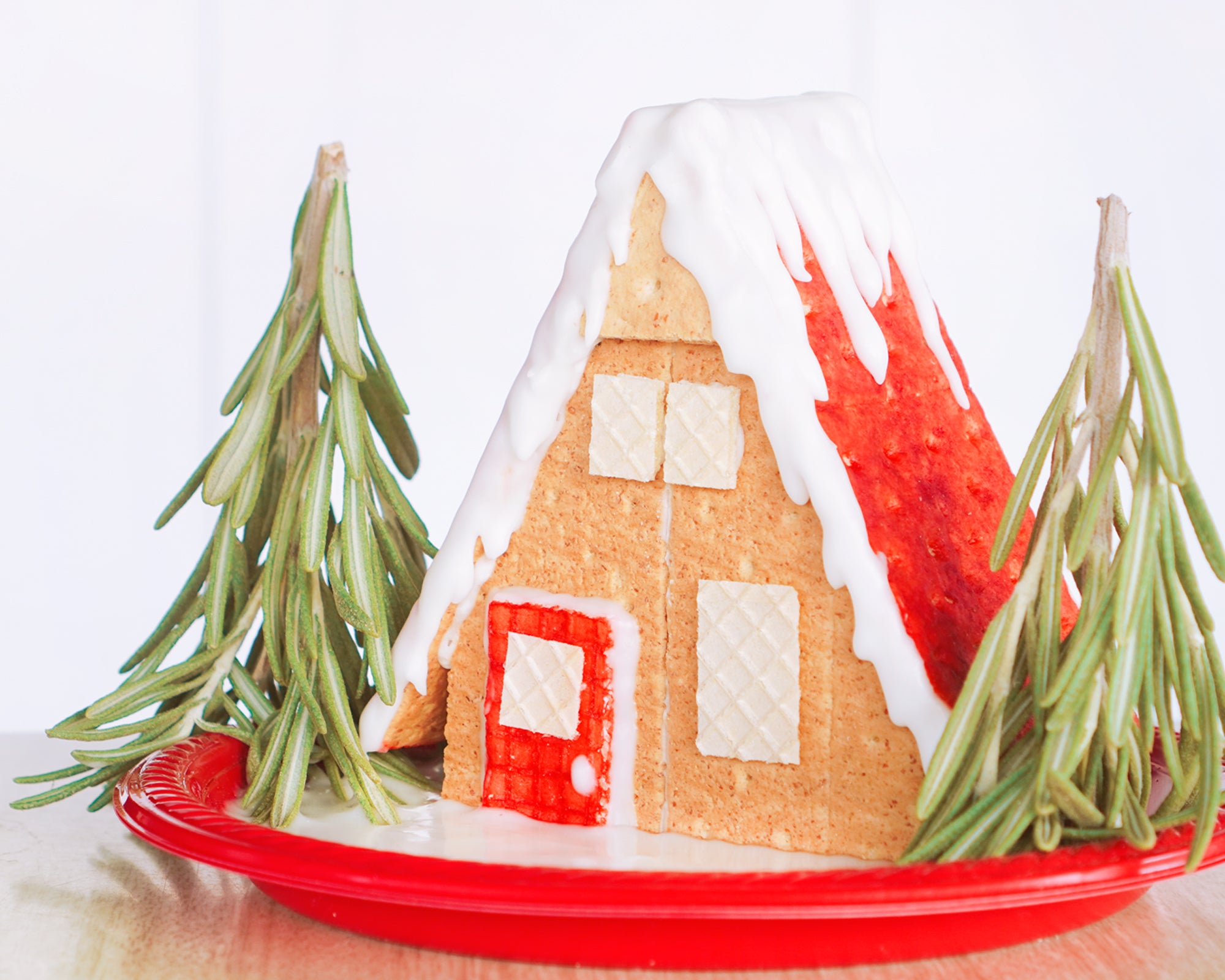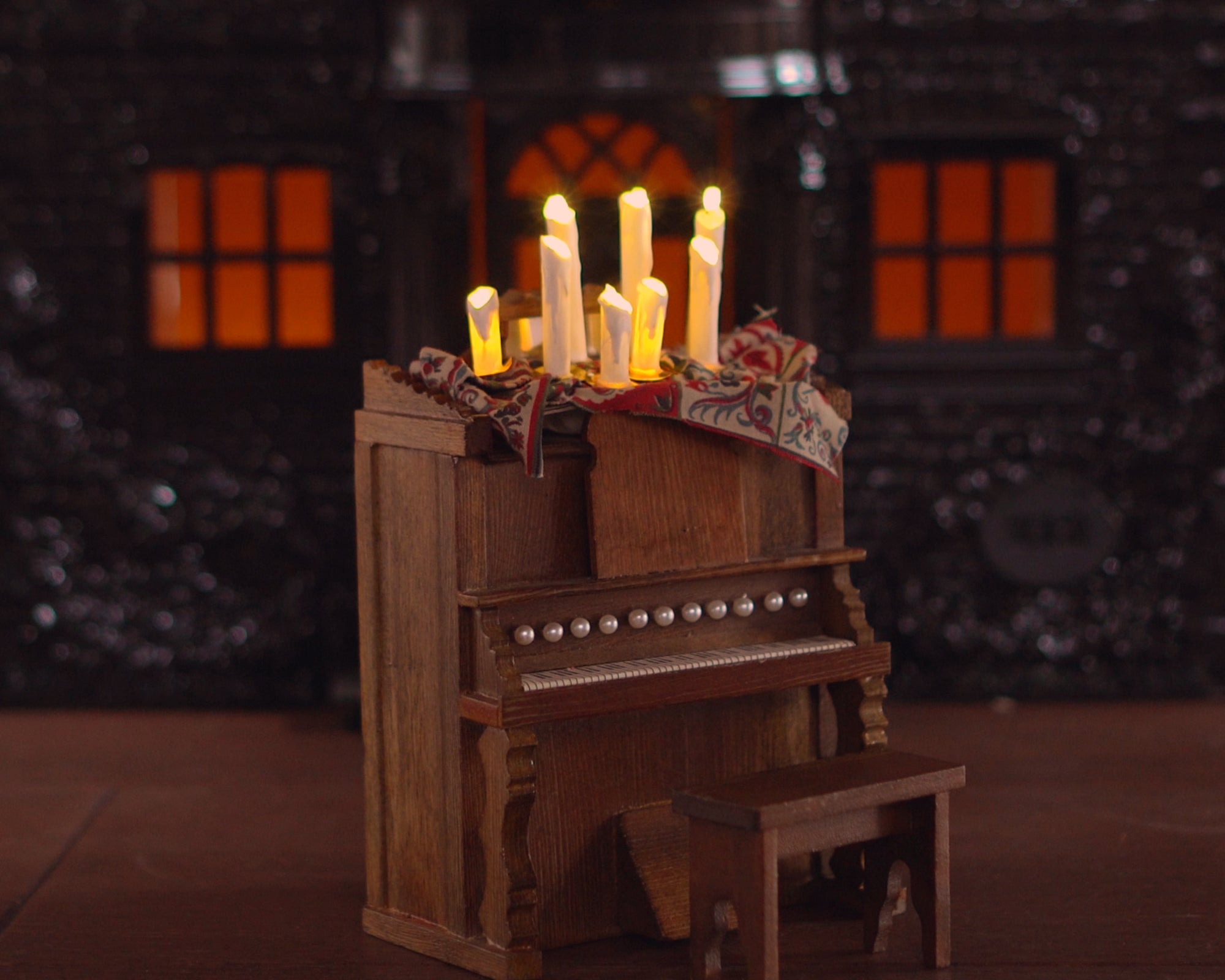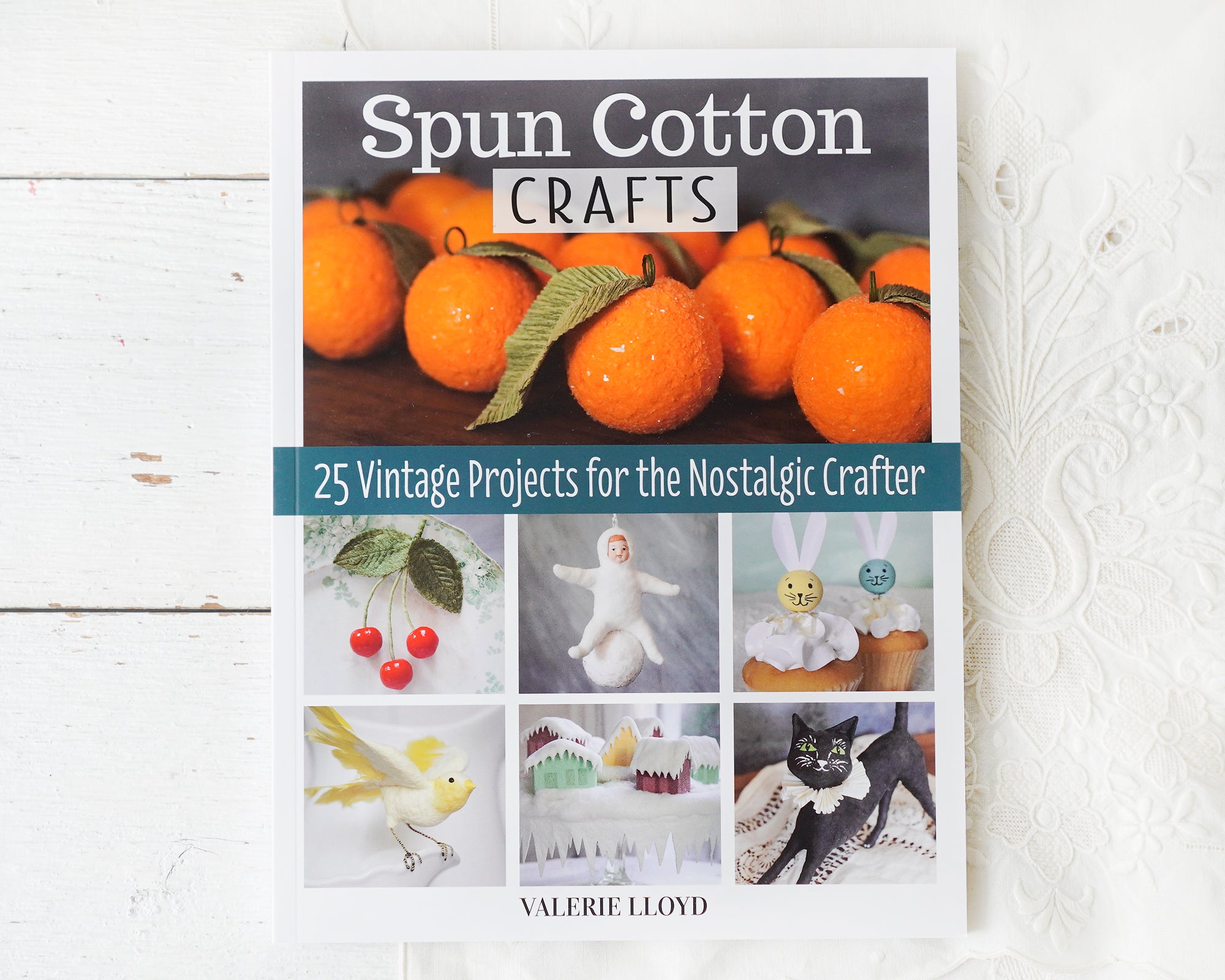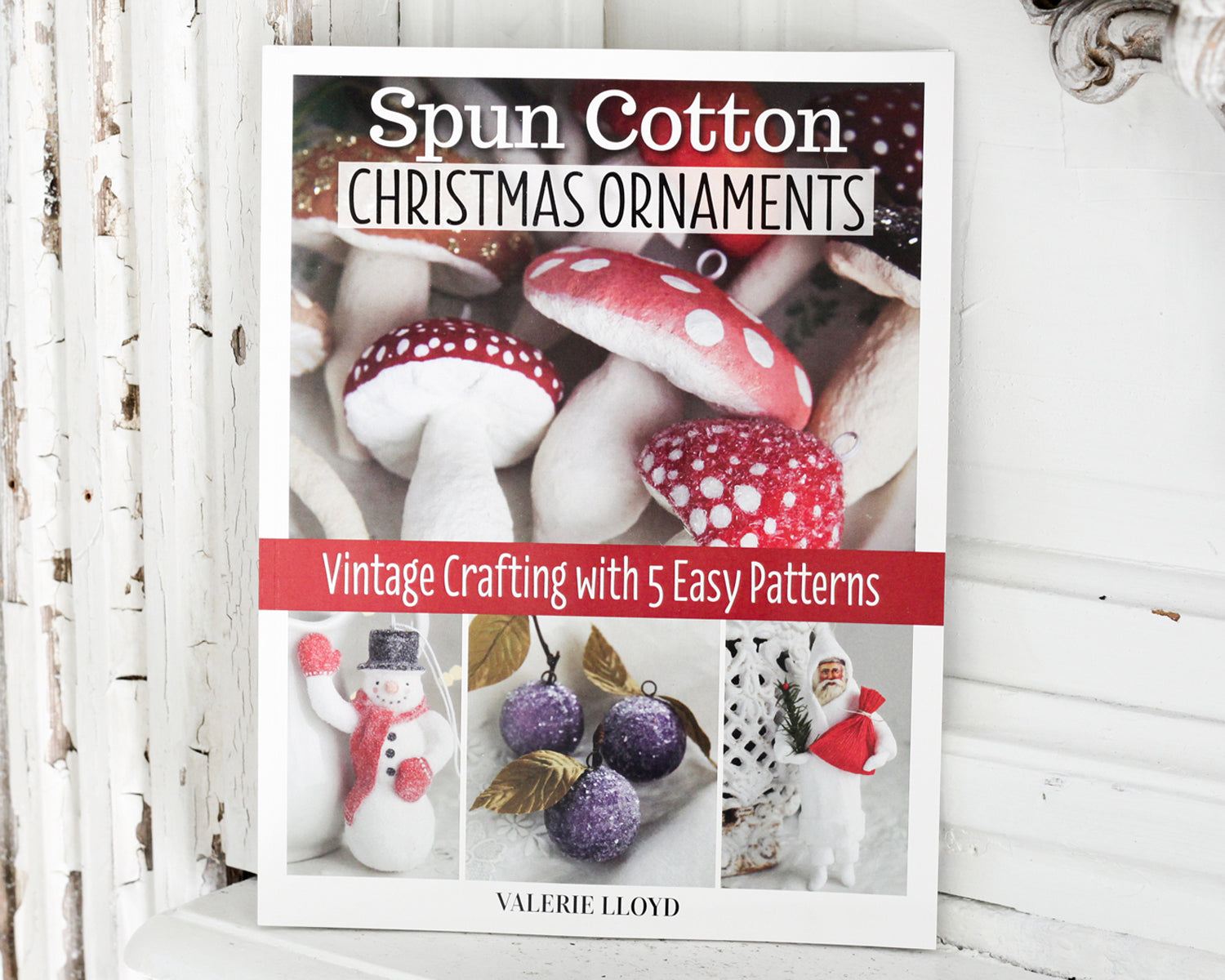Spun Cotton Tutorial: Victorian Figural Ornament Made with Roving and Cotton Batting

Hi ho, and Merry Christmas! Earlier this year I shared a start-to-finish spun cotton snow baby figural ornament tutorial using cotton coil or medical cotton. Today, I'm doing a version using roving and cotton quilt batting! These cottons behave a little differently, so it's fun to try out these variations. Figures made of medical cotton have a papery texture, while this figure is closer to the antique style of spun cotton as the roving and batting are less processed.
If you are new to spun cotton, please consider my book, Spun Cotton Crafts! This book covers the materials and techniques for spun cotton in-depth, and has 25 projects for you to practice your skills. It also features instructions for crafting wire armatures and clay faces for figures of this type.
When shopping for cotton roving, look for those called 'long staple sliver,' which will have longer individual fibers ideal for wrapping armatures. Short staple cottons can be a bit on the slippery side, and aren't as easy to work with.
Today's ornament also features cotton quilt batting, and you'll want to find one that is 100% cotton with no scrims or stabilizers. The one I am using can be found here.
The instructions for crafting clay faces for figurines of this type can be found here, or in the book, Spun Cotton Crafts. For this project I'm using a face that's about 3/4 inch tall, which is a good size for a 4-inch figure. If you are using a larger face, adjust the size of the armature so that the total length is about 5 times the length of the face.
As an affiliate I may earn commission from qualifying purchases at no cost to you. I offer these tutorials for free, and your clicks support my work, thank you!
Supplies:
- Aluminum armature wire
- Pliers
- Cotton roving
- 100% Cotton quilt batting
- Cornstarch medium (see below for mixing instructions)
- Paintbrush
- Wax paper
- Low temp hot glue gun, hot glue
- 8mm Spun cotton balls
- Roughly 3/4 inch tall paper clay face (click here for the how-to on clay faces)
- 24 Gauge white floral wire, corsage pin
Please watch the video, and feel free to pause or rewind as needed.
Step 1:
Create a 4-inch tall armature using two pieces of aluminum wire, 8 and 10 inches each. Take the short wire, bend it into a loop at the center and twist a couple times to form the head and neck. Bend the longer wire in half, hook it over the head, and then wrap the tails around the other wire's arms a couple times to make shoulders. Bring the ends of the long wire together and twist at the center of the torso. The remainders of these wires will be the legs. Hold up the clay face to the figure to judge the height. Snip the wires of the legs and arms so that they are proportionate to the face, and curl in the ends with pliers.
Step 2:
Tear strips of cotton roving roughly 6 inches long, and split lengthwise so that they are about 3/4 inch thick. Starting on one of the arms near the shoulder, begin wrapping the cotton around the wire arm, wrapping over the end of the cotton strip to secure it. Spin the armature as you wrap so that you can maintain tension with the cotton strip. Wrap all the way down to the end of the hand, and just slightly past it. Tuck in the end over the hand, and then wrap up the other direction, wrapping the cotton over itself back up to the shoulder.
If you have never done this before, take some time to play and experiment to see how the cotton behaves.
Continue wrapping the cotton strip over itself until the arm has an even layer of cotton covering the armature.
Complete wrappings on all four limbs.
Step 3:
Prepare starch medium: Mix 1 tbsp cornstarch with 1 tbsp water to make a slurry. In a saucepan, boil 1 cup water, and reduce heat to a simmer. Add the slurry a spoonful at a time until all is dissolved, stirring continuously. Simmer for 2 minutes, or until all lumps have been incorporated. Let cool.
Use a paintbrush to apply a layer of starch to the cotton-wrapped limbs. Just coat the outside of the cotton - do not saturate. Set the piece on wax paper to dry.
Step 4:
The clothes will be made from cotton batting. Start with the pant legs: Tear a small rectangle of batting the length of the full leg, and wide enough to wrap around the circumference of the leg with 1/2 overlap. Tear away any extra bits until this piece fits without excess. Make a matching piece for the other leg. Fold under the lower edge to make a finished hem. To apply the pant leg, apply starch medium to the leading edge so that it sticks to the leg. Wrap the pant leg loosely, focusing on creating an even pant leg all the way down. With a small amount of starch on your fingers, smooth the feathered edges against the surface. Apply the second pant leg in the same way, and then brush a light coating of starch on both pant legs. Add sweater sleeves over the arms using the same method.
Step 5:
Cut an oval of cotton batting to fit the size of the face. Hot glue it to the back of the wire armature head, and then glue the clay face to the front.
Tear a long strip of cotton batting to fill out the torso. Start by wrapping the strip over the shoulder, around the back, and over the other shoulder to secure it. Continue wrapping it down around the belly, filling out the shape of the figure so that the stomach is as thick as the pants. Brush with starch to seal all of the feathered edges against the body.
Tear a strip of cotton to cover the entire back of the figure from the top of the head, to the rear end. This will fill out the back of the piece. Apply it with starch, and brush the feathered edges against the body..
Tear a triangle of cotton to create the front of the sweater. Size this piece so that the edges will wrap around the sides of the figure. Fold in the top and bottom edges to make finished hems. Apply it with starch, sealing all of the feathered edges against the figure.
Step 6:
Roll up a little piece of cotton to make a puffy hat on top of the head. Apply it, and then tear a long strip to wrap around the head, holding it in place. Fold in both long edges of this strip, and then wrap it around, overlapping to finish. Brush the hat with starch, taking care to avoid the face.
For a scarf, cut a strip of cotton with scissors instead of tearing. This will create sharp edges that do not need to be folded under. Wrap around the neck, and starch in place.
Step 7:
Moisten the entire surface of the figure with starch when you are ready to pose it. With the surface moistened, bend the figure gently into its pose. Let the figure dry completely.
To add a hanging loop to make the figure into an ornament, wrap a piece of floral wire twice around a paintbrush handle or awl to make a loop, twist the ends together, and snip them off to make a short peg at the end. Use a corsage pin to pierce a hole in the top of the head, wiggling it around to widen it. Dip the wire peg in glue, and insert it into the hole.
Glue 8mm spun cotton snowballs onto the hands.
Featured Products:








